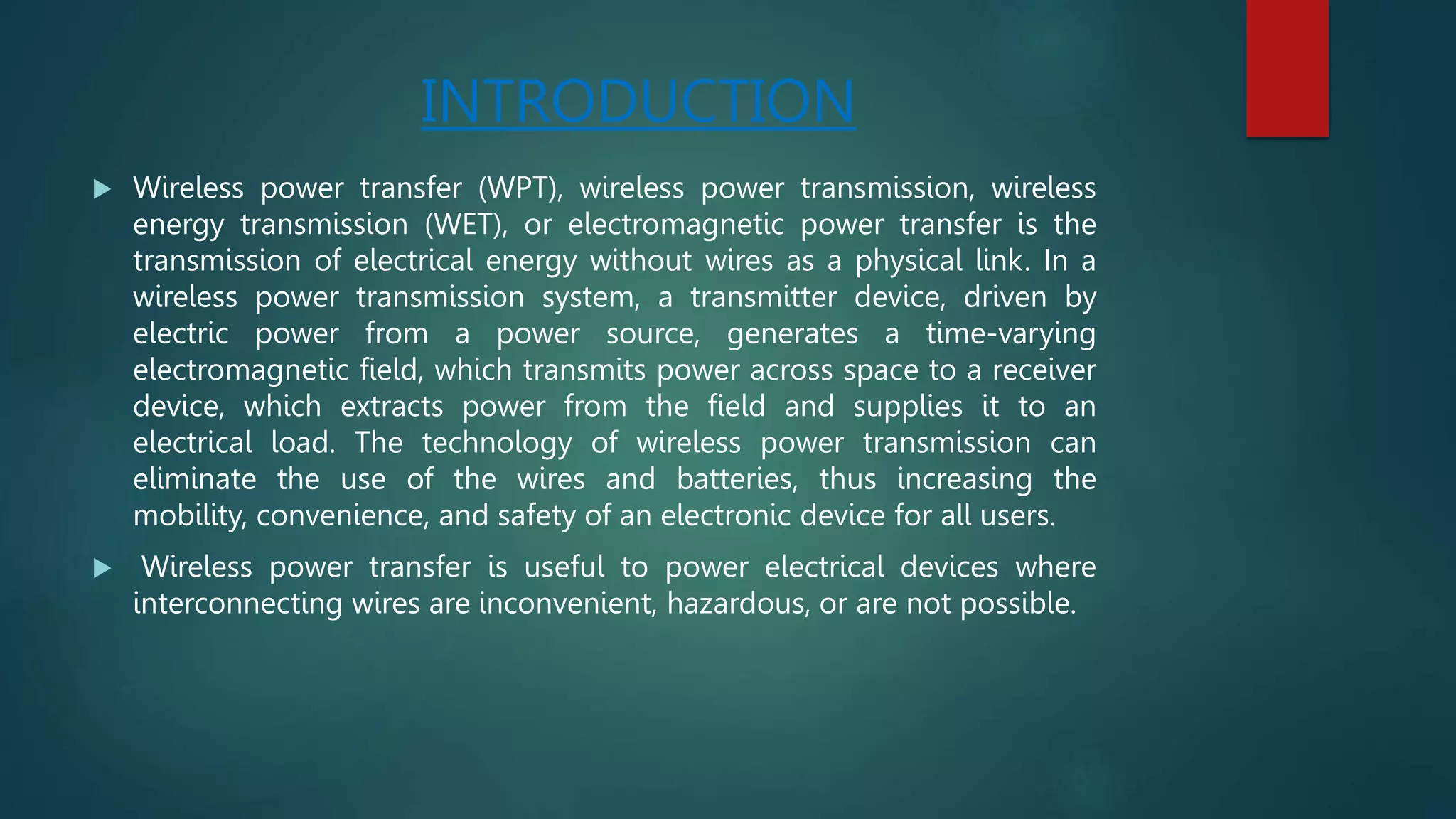Wireless power transfer involves transmitting electrical energy without wires by generating an electromagnetic field from a transmitter to a receiver. It can eliminate wires and batteries, increasing mobility. Wireless power is useful for powering devices where wires are inconvenient, hazardous, or impossible. Common techniques include inductive coupling using coils, resonant inductive coupling for greater efficiency and range, and far-field methods like microwave transmission over longer distances but requiring line of sight.


















































































